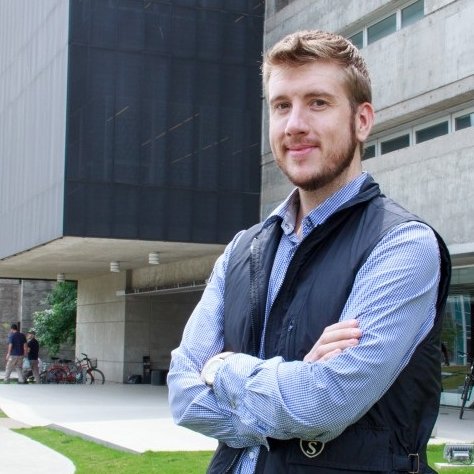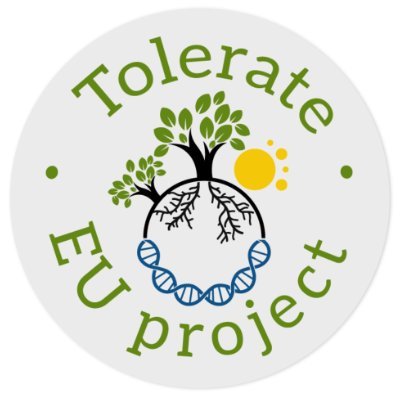
Michele Partipilo
@MichelePartipi3
Followers
75
Following
497
Media
11
Statuses
153
Joined November 2021
n/n very happy for this preprint in the @LabNikel with the great help of @FavoinoGiusi, @OscarPuiggene @BioSteDonati, all other co-authors and supervision of @PabloINik!
0
0
1
5/n Last, to expand beyond P. putida the functional connection between transhydrogenation and metabolism, we looked at protein and gene distribution, and comparative genomics to find several cellular processes consistently relying on transhydrogenases for redox homeostasis.
1
0
1
4/n We also uncovered that synergic transhydrogenation is crucial for tolerance to formate, a key C1 substrate for biotech. By channeling excess reducing equivalents through native formate dehydrogenases, P. putida detoxifies formate and sustains redox stability under stress.
1
0
1
3/n One exception emerged: ΔsthA cannot grow on acetate. Via proteomics, metabolomics and ultimately Adaptive Laboratory Evolution, we could trace back this unexpected phenotype to a genetic regulatory mechanism linked solely to one transhydrogenase.
1
0
1
2/n While individually nonessential, the removal of both the membrane and soluble transhydrogenase disrupts growth, energy charge, and NAD(H)/NADP(H) balance. Together, PntAB and SthA act as a reversible redox buffer, maintaining homeostasis under diverse metabolic conditions.
1
0
1
🧵1/n How do bacteria keep their redox and energy balance steady across shifting carbon sources and stress? ⚡️ In Pseudomonas putida, we found that transhydrogenases form a flexible redox control system that stabilizes metabolism across regimes.
biorxiv.org
Redox homeostasis is central to microbial physiology and stress adaptation, yet the functional roles of transhydrogenases remain poorly understood beyond a few organisms. In this study, we systemat...
1
1
2
Growth-coupled microbial biosynthesis of the animal pigment xanthommatin — Led by Leah Bushin & featuring @mgracialvan @Daniel__Volke @OscarPuiggene in a fantastic collaboration w/@BradMoore_SIO @UCSD @DTUBiosustain @NatureBiotech
https://t.co/NY7YOG4CmG
1
8
40
New publication alert! Click-code-seq, our DNA-damage sequencing method, is now out! This tool can advance our understanding of aging, cancer and neurodegeneration. Huge thanks to the amazing collaborative team behind this!
Mapping oxidatively damaged bases and abasic sites at single-nucleotide resolutions reveals transcription-related strand biases, patterns mirroring cancer mutational signatures, and the action of anticancer drug irofulven https://t.co/NeMTuPXiHI
0
1
3
A blueprint for designing the next-generation of synthetic C1 microbes @NatureComms / We outline how to engineer non-canonical hosts, apply modeling & C1-inducible promoters & integrate sustainability metrics to advance carbon-efficient biomanufacturing https://t.co/h8h8o7qlo8
nature.com
Nature Communications - Synthetic one-carbon assimilation could contribute to a more sustainable and circular carbon economy, but much work in this field has focused on model microorganisms. Here...
0
3
10
#Synthetic C1 #metabolism in Pseudomonas putida enables strict formatotrophy and methylotrophy via the reductive glycine pathway—led by @JustineTurlin, @mgracialvan & @OscarPuiggene w/@BioSteDonati & @SebWenk @mbiojournal #Biotechnology
https://t.co/C5kuWaWMFa
0
5
42
Implementing synthetic serine cycles in #Pseudomonas putida unlock methanol assimilation in our favorite bug with carbon conservation, led by @OscarPuiggene · #SynBio #MetabolicEngineering #Methanol @TrendsinBiotech
https://t.co/SgGFi4UbJY
1
8
44
Please share: I am hiring a postdoc that will work on enzyme characterization and engineering in the frame of the EU consortium project C5. Read all details here and apply until August 10:
0
10
13
New paper from the lab from @SriramGarg. We introduce a general substitution matrix for structural phylogenetics. I think this is a big deal, so read on below if you think deep history is important.
academic.oup.com
Abstract. Sequence-based maximum likelihood phylogenetics is a widely used method for inferring evolutionary relationships, which has illuminated the evolu
7
32
85
🚨 New article! Discover how #TOLERATE uses ancient DNA & synthetic biology for #climateresilience & innovation. 👉 https://t.co/NkQYqkVCjZ
#HorizonEU #EUResearch
0
2
4
🚨#LLPS: New trick for an old membrane protein! Homo- and hetero-condensates of a native membrane protein in E. coli tagged with PopTag 🔬🦠 LacY-PopTag is functional and localizes at cell poles or mobile foci in a curvature-dependent manner 🔗 https://t.co/1SmP3ZSUUX
2
5
16
🆕 New from TOLERATE: What can ancient climates teach us about today’s challenges? Discover how the past helps shape future climate resilience. 🌍 Read more 👉 https://t.co/FFQQpSPJia A special thank you to @AmedeaPerfumo –AWI- for this thoughtful contribution! #TOLERATEProject
0
2
1
Next we have @SebWenk with the Evolution-assisted engineering of formate assimilation in Escherichia coli #synbionl2025
0
1
5
I'm truly excited to announce our new publication in @Nature unraveling a central picture of the Methyl-coenzyme M reductase (MCR) activation machinery and it's strong ATP dependency - kudos to @AnujR2d2 for the fantastic illustration! LINK: https://t.co/OmMRWWtNR8
8
39
118
🌱💧 @TOLERATE_EU featured at #SFN & #Microbio25! Showcasing drought-resilient biobased solutions & connecting with the biotech community. 🔗 https://t.co/AyST39laxD
0
3
5
Ins and outs for designing bacterial metabolisms for C1-assimilation, from a multilevel perspective, now pieced together in this review from our @LabNikel! Check it out at
academic.oup.com
In this review, we summarize the challenges in establishing synthetic pathways for assimilation of C1 feedstocks in microbes and how to solve these issues
Seven Critical Challenges in Synthetic One-Carbon Assimilation and Their Potential Solutions—led by @FavoinoGiusi & @OscarPuiggene @LabNikel @FEMSmicro #Microbiology #Reviews #SynBio #Metabolic #Engineering
https://t.co/J7an6ZeBxk
0
3
9












